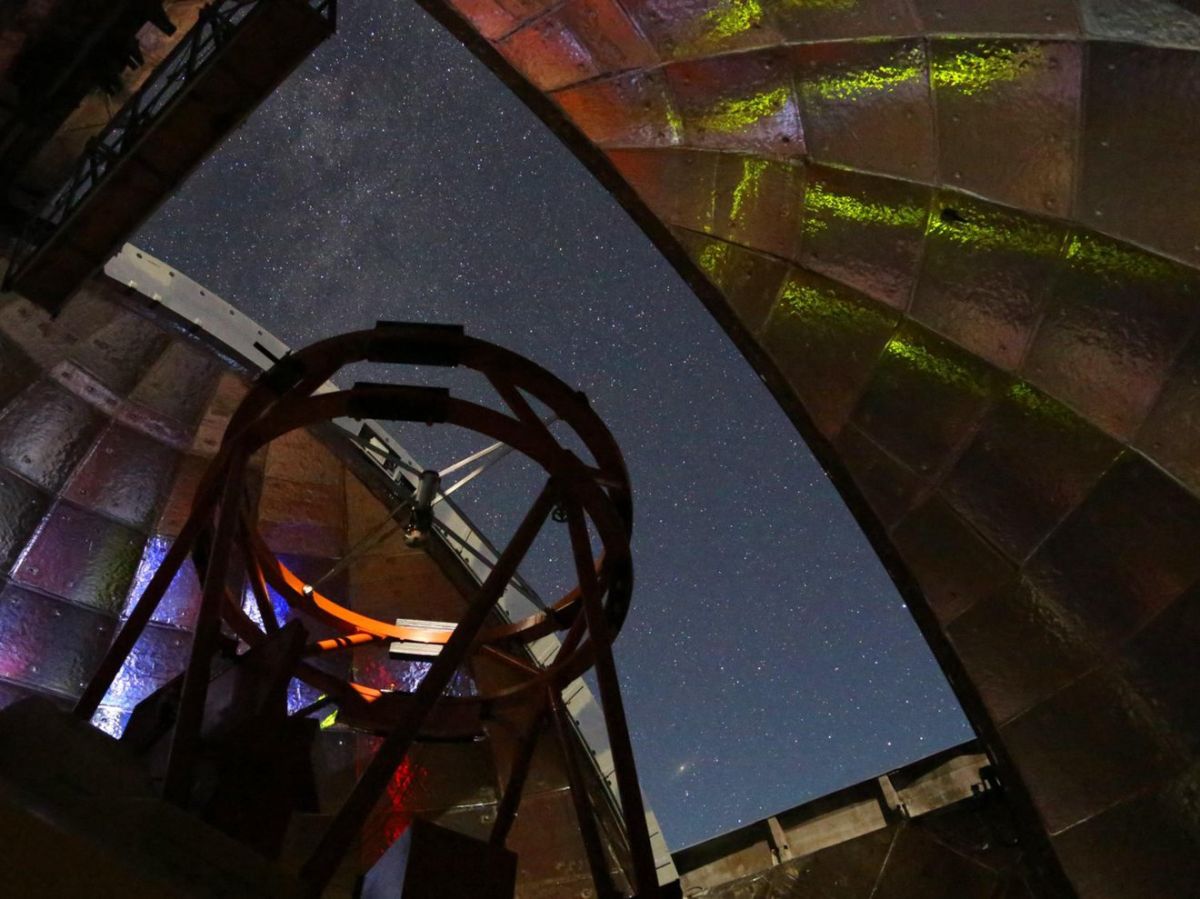The largest asteroid to zoom past Earth this year will do so on March 21, NASA says. Astronomers will get a valuable opportunity to observe a space rock up close as asteroid 2001 FO32 swoops past our home planet on March 21, but the rock won’t come closer than 1.25 million miles (2 million kilometers), NASA’s Jet Propulsion Laboratory announced today (March 11) in a statement. “There is no threat of a collision with our planet now or for centuries to come,” the statement read. Related: Scientists prepare for their last…
Read MoreMonth: March 2021
This strange lava-rich alien planet is making itself a new atmosphere
Scientists think they’ve spied an alien world that lost its atmosphere — then conjured itself a new one. That’s according to a new analysis of Hubble Space Telescope observations gathered in 2017 of a planet dubbed GJ 1132 b. The world tightly orbits a red dwarf star located about 41 light-years from Earth, completing one circle every 1.5 Earth days and soaking up lots of stellar radiation in the process. And now, scientists think they see signs of a secondary atmosphere, one that was born of the exoplanet itself long…
Read More‘For All Mankind’ exclusive sneak peek: Watch Gordo Stevens try out a new spacesuit in ‘Pathfinder’
[embedded content] After facing down a zipper “malfunction” in the Apple TV+ alternate history space show “For All Mankind,” astronaut Gordo Stevens is getting used to a spacesuit again. As we saw last week, Stevens is trying to get his space groove back for a new mission, his first in years. He’s put on a bit of weight and it’s been a while since he last wore on a spacesuit, but Stevens is hoping the old routine will come back to him after his moon flights of the 1960s. Since…
Read MoreSee the Latest Stunning Images from Mars
NASA’s Perseverance rover, China’s Tianwen 1, and the United Arab Emirates’ Hope orbiter share their latest photos from Mars. The post See the Latest Stunning Images from Mars appeared first on Sky & Telescope.
Read MoreJapanese Astronaut Soichi Noguchi Works on Station’s Solar Arrays
During the March 5, 2021, spacewalk, JAXA astronaut Soichi Noguchi spent nearly 7 hours working on the space station.
Read MoreStrong Team, Strong Science: Space Station Hardware Developers, Payload Support Teams Celebrate Two Decades of Success, Prepare for Third
The International Space Station, now celebrating 20 years of continuous crew operations, is a marvel of cutting-edge research – thanks in large part to Marshall facility engineers and payload operations teams, who manage science hardware and provide real-time support for experiments on orbit.
Read MoreThousands more satellites will soon orbit Earth. We need better rules to prevent space crashes.
This article was originally published at The Conversation. The publication contributed the article to Space.com’s Expert Voices: Op-Ed & Insights. Lauren Napier, PhD Researcher in Space Law and Policy, Northumbria University, Newcastle In recent years, satellites have become smaller, cheaper, and easier to make with commercial off the shelf parts. Some even weigh as little as one gram. This means more people can afford to send them into orbit. Now, satellite operators have started launching megaconstellations — groups of hundreds or even thousands of small satellites working together — into orbit around Earth. Instead…
Read MoreArecibo’s To-be-determined Future
As cleanup operations are underway at Arecibo Observatory in Puerto Rico, some scientists are proposing a replacement for the esteemed radio dish. The post Arecibo's To-be-determined Future appeared first on Sky & Telescope.
Read MoreRare supernova relic found at the core of our Milky Way
NASA’s Chandra X-ray Observatory has discovered the remains of a rare kind of stellar explosion near the center of the Milky Way. Supernovas are stellar explosions that seed the galaxy with elements vital for life. Sagittarius A East (or Sgr A East) is a supernova remnant that lies near Sagittarius A* — the supermassive black hole in the center of the Milky Way. This supernova remnant is the first known example in our own Milky Way galaxy of an unusual type of white dwarf stellar explosion called a Type Iax…
Read MoreAndrew Chaikin’s ‘A Man on the Moon’ relaunched as Folio Society book set
[embedded content] When Andrew Chaikin’s “A Man on the Moon” was first published in 1994, a quarter century had passed since the first astronauts walked on the lunar surface. Now, more than 25 years after its release, a new, deluxe version of the book is ready for the next generation of lunar explorers, space enthusiasts and anyone who wonders what it was like to journey from Earth to the moon. Described as the definitive account of NASA’s Apollo program by the astronauts themselves, Chaikin’s “A Man on the Moon: The…
Read More
